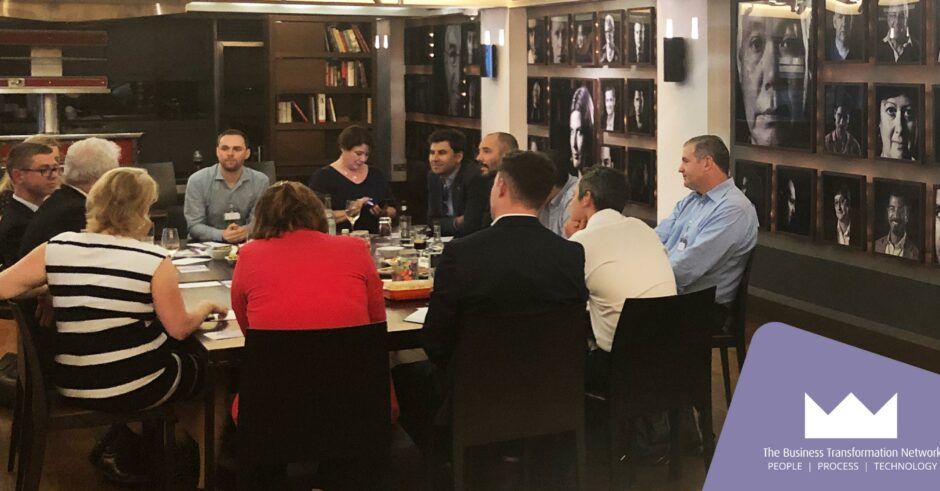The Business Transformation Network recently hosted an event on “Innovation in Reward” at the Andaz Studio in London.
The conversation was open and varied, touching on a wide variety of subtopics including:
1. How to cater to the different generations within the workforce and ensure each has its own EVP?
2. How can you make technology & analytics work for you? What do you use to help deliver your Reward strategy?
3. Bridging the gap between reward and performance management to provide clarity for all employees.
Businesses today operate in an environment where we have 5 very different generations within our workplace, and the original strategies for reward and engagement that used to work aren’t quite having the same effect today. Attitudes to reward have changed dramatically over the years and there is a need for organisations to build out fresh propositions to attract, retain and engage their workforce through innovative reward strategies.
How to cater to the different generations within the workforce and ensure each has its own EVP?
Organisations are currently operating with a medley of people within their workforce, from traditionalists to Generation Z. As a result of this, organisations are slowly moving away from androgynous reward and are beginning to tailor their reward offerings to their workforce, making total reward almost irrelevant, with total wellbeing taking preference. The general consensus in the room was that there has been a spike in benefits offered by organisations, with less financial rewards packages and more wellbeing focused packages, which reflects the ‘wants’ of the newer generations entering the workforce. Despite a change being seen in the general nature of the reward package, the majority of attendees agreed that there was a struggle with understanding what their package actually entailed and helping them comprehend the link between reward and EVP.
Another agreed issue amongst attendees was how to broach the topic of what your employees want from their rewards to gauge what would be beneficial for them today, with emphasis on what is wanted, rather than what an organisation offers now (or historically). It is often the case that your employees know what you’re offering, but they just don’t value it, so understanding what is of value to them is integral to attraction and retention. Although the core elements behind reward will always be financially driven, it is becoming ever-more about ‘what makes people happy’ now, rendering EVP almost redundant in business today, as it lends itself more towards HR than reward.
How can you make technology & analytics work for you? What do you use to help deliver your Reward strategy?
There is an abundance of technology and data available in this space which is causing a slight infoglut within organisations. Although it is not always the technology creating this issue (it can also be the processes with which we compile the data), it appears that the technology isn’t to the operational level it needs to be to help make reward innovative. The general consensus on reward technology was that although there appears to be some great technology and applications in this space, none of it seems to deliver at the level that is required, so reward teams tend to compensate with returning to old processes that they know, rendering the technology pointless.
How can we bridge the gap between reward and performance management to provide clarity for all employees?
Typically, it tends to be quite hard to establish a connection between reward and performance management without putting a number to it in the form of KPI’s, yet feedback isn’t trusted throughout organisations to be unbiased. The unanimity was that it is hard to measure and define reward without having a number to base it on that can be carried over year to year for comparison, but the ideal for the future of reward is that organisations should pay based on potential, not performance.
In short, everyone is discussing innovation in reward, but when we delve into the topic, innovation in reward isn’t quite there yet, as it is predominantly characterised by providing employees with multiple reward options and the ability to opt-in and opt-out instead. With newer generations entering the workforce, the expectations from employees are ever-increasing and ever-changing, which is providing reward with a task of working in contrasting ways: taking a holistic approach to reward, but ensuring it is tailored to the workforce.
The bigger issue organisations are facing is how we communicate reward to ensure that your employees actually understand what is available to them and whether this is of true value.
Keep your eye out for more events like this at www.thebtn.tv/events
This event write-up is exclusive to The Business Transformation Network.

